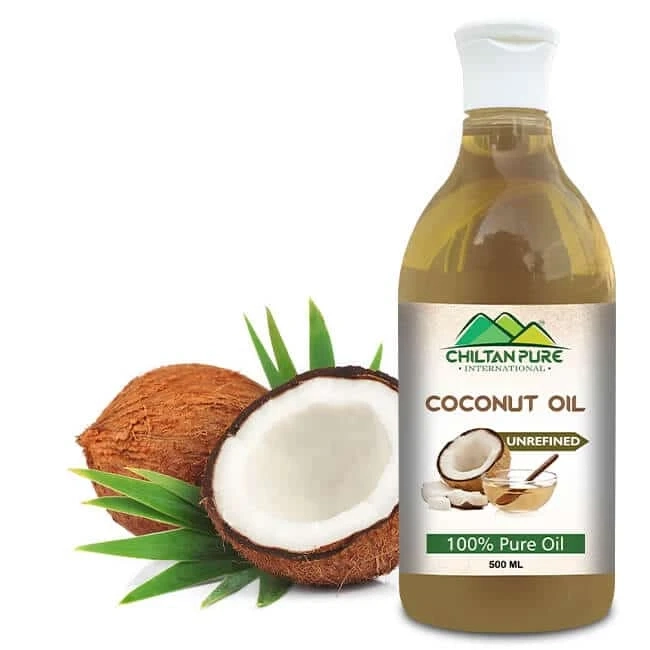Introduction
The coconut tree is a remarkable and valuable plant. Coconut oil has perhaps a thousand uses. The coconut plant nut is used as a food source to sustain life. It is an important component of medicine. Other parts of the plant are used as materials for building shelters, making clothes, charcoal, and various tools. The purpose of the plant is numerous. The coconut tree has a scientific name: Cocos nucifera, but it also has other well-meaning names that seem to fit it just as well. In India, it is referred to as “Kalpa vriksha” or “the tree that provides all the necessities of life.” It is called the “tree of life” in the Philippines.
The coconut tree grows abundantly in the tropics and gives the islands a sense of paradise and romance, especially along their coasts. It usually grows to a height of 60 to 70 feet and lives to be 70 years old. Coconut fruit is botanically considered a seed, but in the tropics mostly a nut. It bears year-round in bundles of 5 to 12 nuts each month.
It takes 14 months for the coconut palm to fully ripen. The young coconut is filled with liquid (referred to as coconut water) and has little flesh. The meat has a soft and jelly-like texture and can be eaten with a spoon. A fully ripened coconut has less fluid and more flesh. Its meat is thick and hard and less sweet than young coconut meat.
The meat and liquid content changes as the nut matures. Fresh ripe coconut meat is also used to make coconut milk, but fresh coconut meat can spoil quickly and is therefore often dried to last for many weeks or longer when sealed in an airtight container and kept refrigerated. However, it is the coconut meat used to make coconut oil that has caused the most controversy in the last two decades and has fueled several nutritional errors.
Controversy
Coconut oil has existed for thousands of years. Evidence of its early use can be seen in Ayurvedic literature. In India, the oil has been used in food, lotions, ointments, baths, and medicines. It has also been used in Asia, the Pacific Islands, Africa, and Central America. It was introduced to Europeans as early as the 15th century.
In the 1800s, coconut oil was the main form of trade for many of these islands and countries, which had an abundance of coconut palms. It wasn’t just edible oil; it was used to make soap, candles, lamps, pomades, and many cosmetics. 10 coconuts were needed to produce a liter of oil. Increased demand for coconut would, of course, mean higher prices. The main producers of coconut oil were the Philippines, Malaysia, Indonesia, and India. It was also produced in Latin America and South America. These are the producers who have mostly been hit by the biggest propaganda that has ever hatched in the field of nutrition.
In the 1970s, studies showed that saturated fats increased blood cholesterol levels, which may increase the risk factor for developing heart disease. In the USA, coconut oil has already been used in several bakery products. Even in many old American recipe books, oil was included. But soon many consumer groups and special interest groups began lobbying to remove coconut oil from most foods.
As a result, coconut oil, due to its high content of saturated fats and its new designation as “fat clogging arteries”, has become an undesirable and “unhealthy” cooking choice. This has maintained the perfect environment for other types of oil producers to take advantage of this growing consumer fear. And that’s exactly what they did to push their cheaper hydrogenated oils.
In the 1980s, greater efforts were made to promote the use of soybean oils. Proponents of the anti-tropical oil campaign were very vocal and soon succeeded in reducing the overall consumption of tropical oil, including coconut oil, in the U.S. diet to about 2%. Food manufacturers have even gone so far as to state on their labels that their products “do not contain any tropical oil”.
Scientific and political propaganda has succeeded in gaining public interest in replacing tropical oils with cheaper polyunsaturated soybean oil from American farmers. The general public and the commercial food industry have supported the idea that polyunsaturated vegetable oils, such as soybean, safflower, and corn oil, are good at lowering total cholesterol, better than coconut oil. (One important fact is that this method of lowering total cholesterol was not enough to determine healthy cholesterol. A person with total cholesterol of 200 mg/dl may still have heart problems. The best way to measure cholesterol is to use a cholesterol ratio that takes into account HDL and LDL levels. A cholesterol ratio of 5.0 is normal and above this value means an increased risk of heart disease).
0



